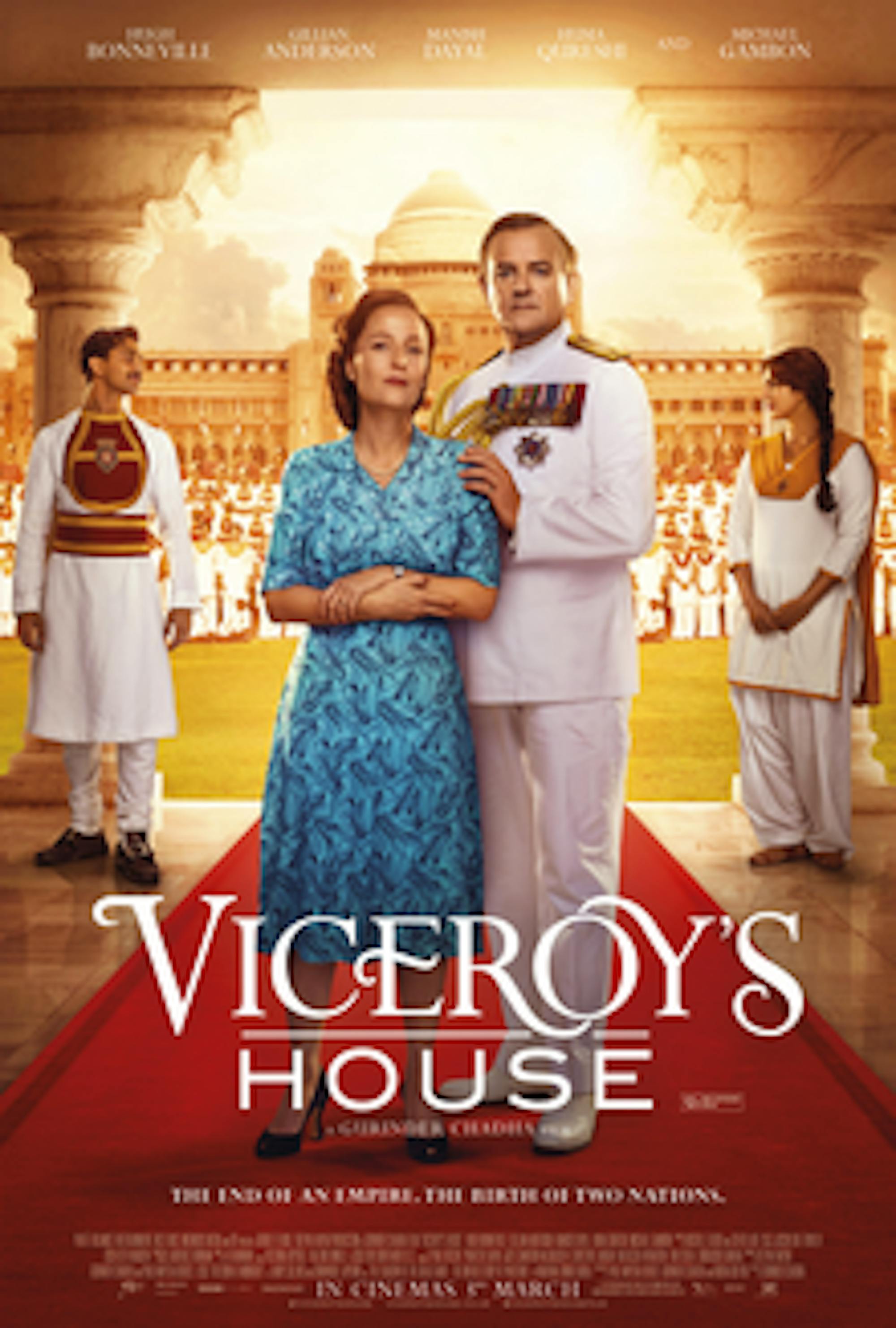Before the credits roll on Gurinder Chadha’s historical drama “Viceroy’s House" (2017), released worldwide on Sept. 1, title cards underline the human cost of the 1947 partition of India into the newly independent, decolonized nations of India and Pakistan. Over 10 million people, including Hindus, Muslims and Sikhs, were displaced from their homes, leading to the death of over one million.
Just one of those displaced people, the titles explain, was the grandmother of Chadha, the film’s director. This reveal makes Chadha’s role in the project curiously incongruous with her intimate connection to the film’s events. “Viceroy’s House” is a competently done, historical drama, yet it seems either Chadha or the studio suits passed up the opportunity to make a great film and decided to go safe and simply make a good one. By doing the latter, however, the film is easy forgettable.
“Viceroy’s House” details the partition and independence of India from the British empire in the summer of 1947. The creation of a newly independent state out of the vast and diverse British Raj in India was daunting and fraught with violence. Though the full complexity of the situation is impossible to explain, the film generally portrays Hindus and Sikhs being in favor of a united India. Whereas Muslims in the north were in support of a partition into India and Pakistan.
The wide diversity of people spread throughout all parts of India complicated the situation.The lead-up to partition was marked by widespread violence and ethnoreligious tension, and was followed by the largest mass migration in human history as groups sought safety in India or Pakistan. The film follows the upstairs/downstairs, gentry/servant parallel format used to great effect in films like “Gosford Park” (2001). Upstairs, Lord Mountbatten (Hugh Bonneville) and his wife Lady Edwina (Gillian Anderson) try to negotiate the decolonization process with leaders like Jawaharlal Nehru (Tanveer Ghani), Muhammad Ali Jinnah (Denzil Smith) and Gandhi (Neeraj Kabi) while managing dissenting pro- and anti-partition camps. They worked to keep the volatile situation from spiraling into civil war.
Downstairs, the various staff members at the Viceroy’s estate debate the various machinations of independence among themselves, nursing underlying tensions and anxieties — and hope for the future — while the Lord’s right-hand Jeet (Manish Dayal) tries to win the affections of Aalia (Huma Qureshi), the Lady’s assistant.
The parallel action of “Viceroy’s House” results in parallel outcomes. It provides an interesting perspective from all competing sides of the issue, from the departing British to the quarreling factions to the wisdom of Gandhi. Chadha provides insight into more opportunistic and backhanded dealings of the British government, as is revealed in backroom conversations between the Lord and his assistants.
Also interesting to watch are the various hopes, fears and tensions held by the staff as they come to terms with their transition from colonized people to sovereign nations. Less interesting is the contrived, by-the-numbers romance between Jeet and Aalia; the screen time devoted to it could be put to much better use. Additionally, the parallel plots come dangerously close to falling into a familiar trap: The film tries so hard to convince us to care about all of the characters that the audience winds up caring about few to none of them.
Despite these gripes, “Viceroy’s House” does represent a welcome return to form for Gurinder Chadha, who at her best is one of the top filmmakers of the British-Indian diaspora. She first made a name for herself with morally and socially complex comedy-dramas about the modern Indian experience in Britain with films such as “Bhaji on the Beach” (1993) and “Bend It Like Beckham” (2002). However, Chadha’s career quieted down after the international success of the latter film, with a few poor efforts such as “The Mistress of Spices” (2005) and “It’s A Wonderful Afterlife” (2010).
The comedic chops of Chadha are subdued in “Viceroy’s House,” but this gives her the opportunity to flex her dramatic filmmaking muscles. The film that results is straightforward, easy on the eyes, polished and dignified, but it lacks that real visceral urgency and presence that today’s moviegoers crave. Though “Viceroy’s House” is pleasant, interesting to watch and inoffensive, it commits the sin of being unmemorable.
'Viceroy's House' partitions the viewer's interests

The cover of "Viceroy’s House", a British-Indian film released in March, 2017, directed by Gurinder Chadha. The film details the partition and independence of India from the British empire in the summer of 1947.
Summary
Though “Viceroy’s House” is a handsome and steady-handed historical drama, it lacks the final “oomph” it needs to make it remarkable.
3.5 Stars





